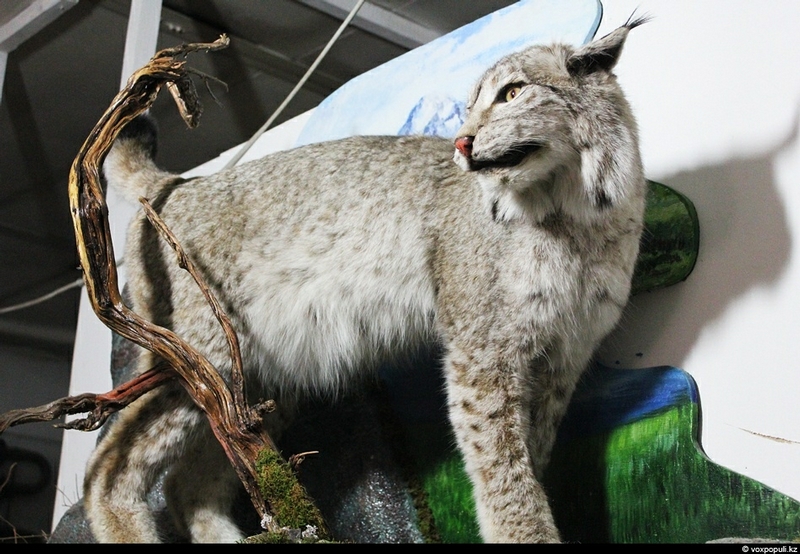
Taxidermy is a science that demands good skills and knowledge in anatomy, chemistry and physiology. Naturally, a taxidermist should also be an artist, talented and creative.
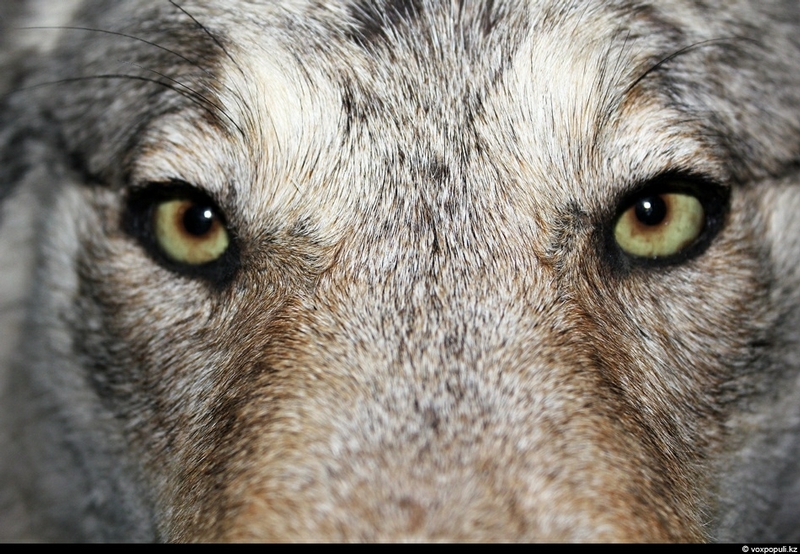
Stuffed animals made by taxidermists make perfect museum exhibits allowing visitors to examine wild animals the way they’ll never do either in a zoo or in wild nature.
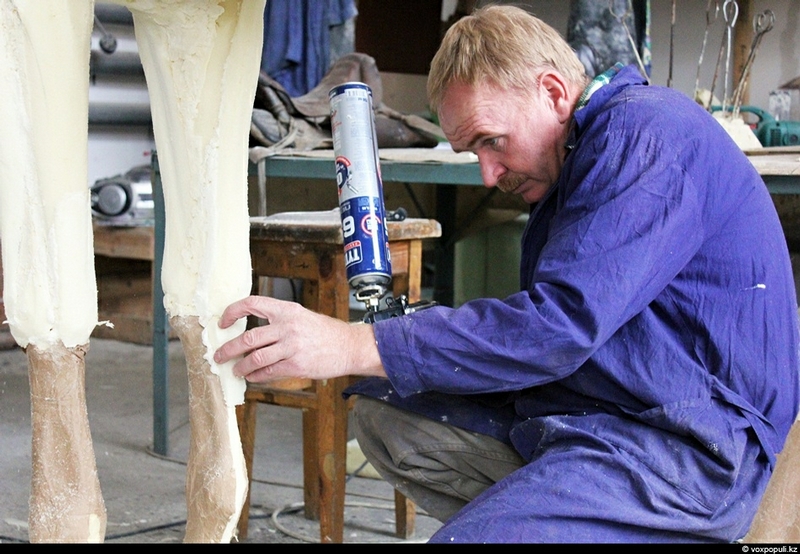
This is an experienced taxidermist and owner of an art studio KazWolf.
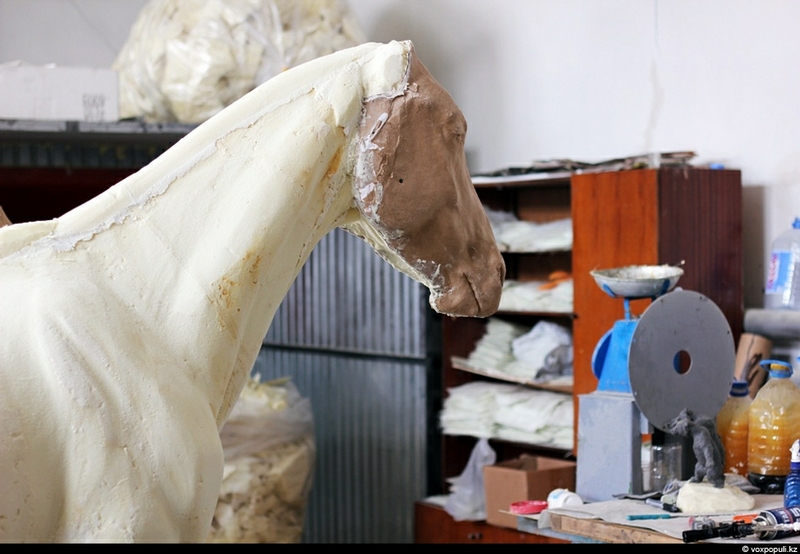
He says that they mostly receive orders for making stuffed wolves but right now, he’s working on a stuffed horse.
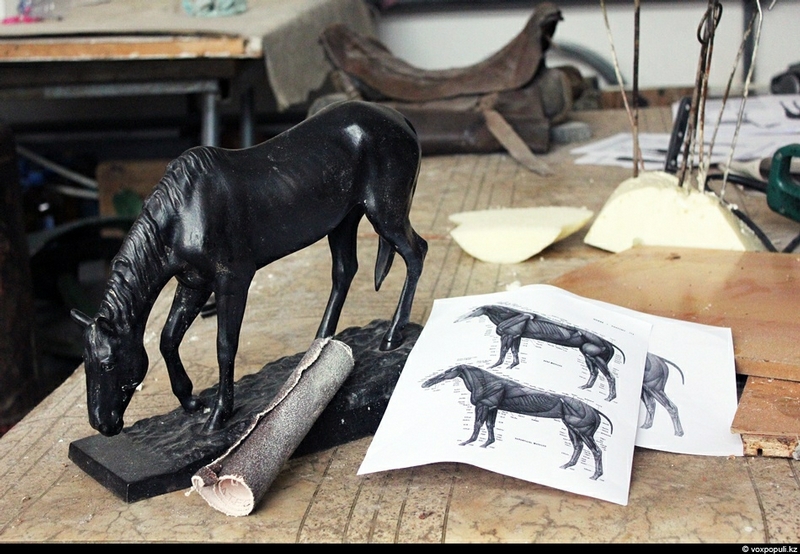
To make a stuffed animal, they have to first of all examine it and its body build.
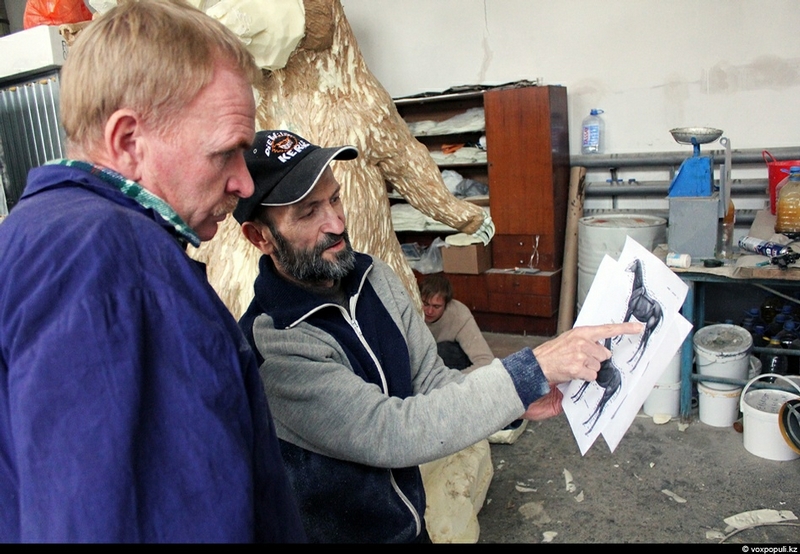
This horse will become an exhibit in a museum in Karaganda.

Today, it’s not enough to just stuff the animal’s skin with shavings, like they did before. To make the stuffed animal lasting, they have to make a polyurethane foam sculpture first.
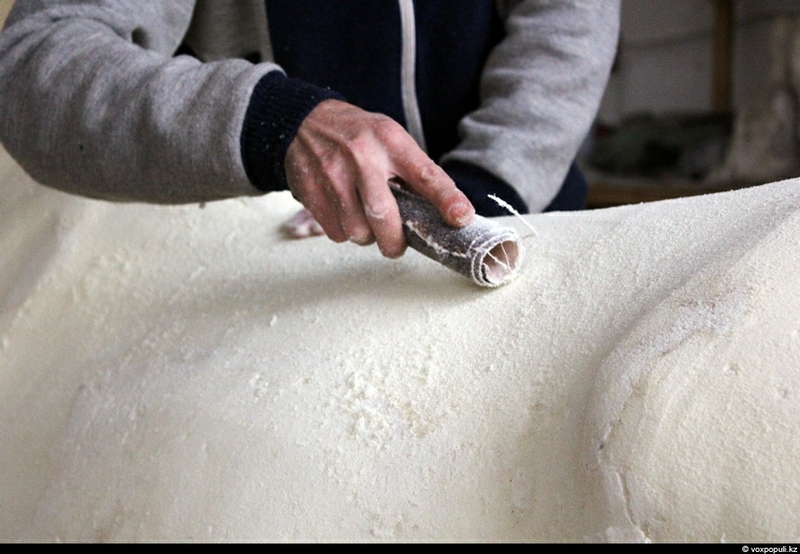
Stuffed animal production includes several stages: they have to make a model, prepare a skin, and then assemble, dry and treat the stuffed animal.
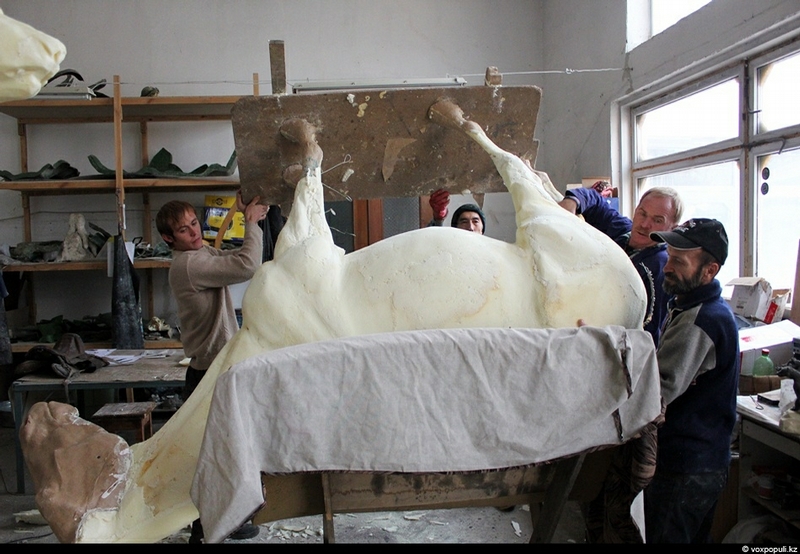
Eliminating defects.
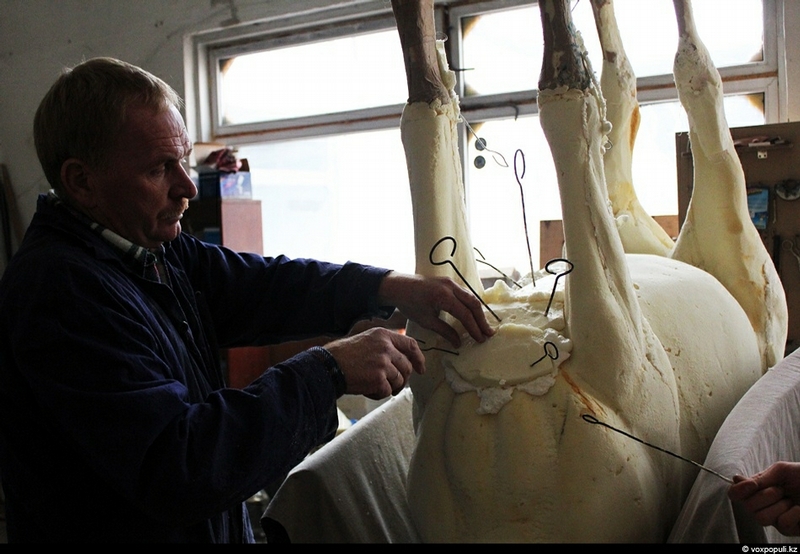

This is going to be a monument to a table glass.
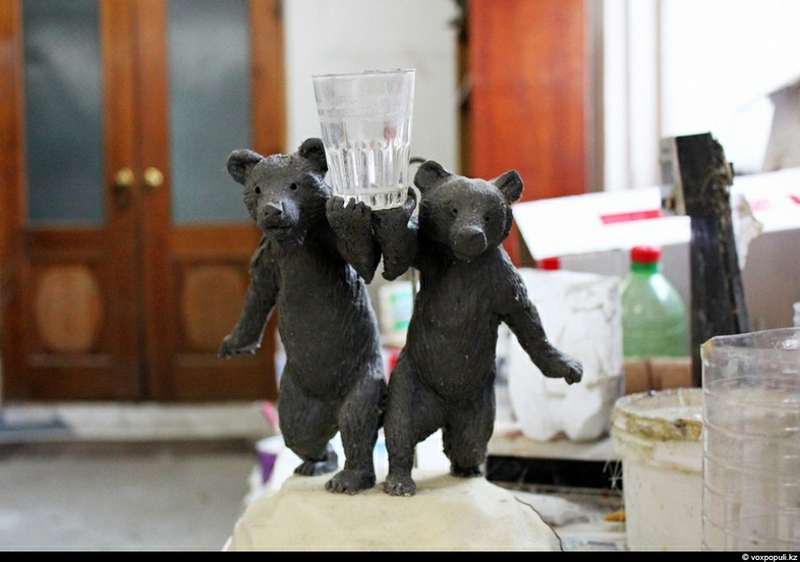
It has some resemblance to Vera Mukhina’s Worker and Kolkhoz Woman.
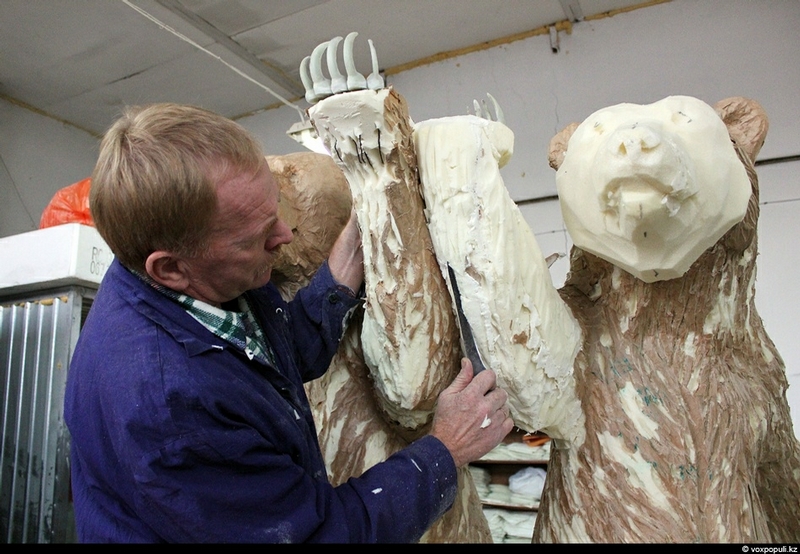

These claws are plastic.
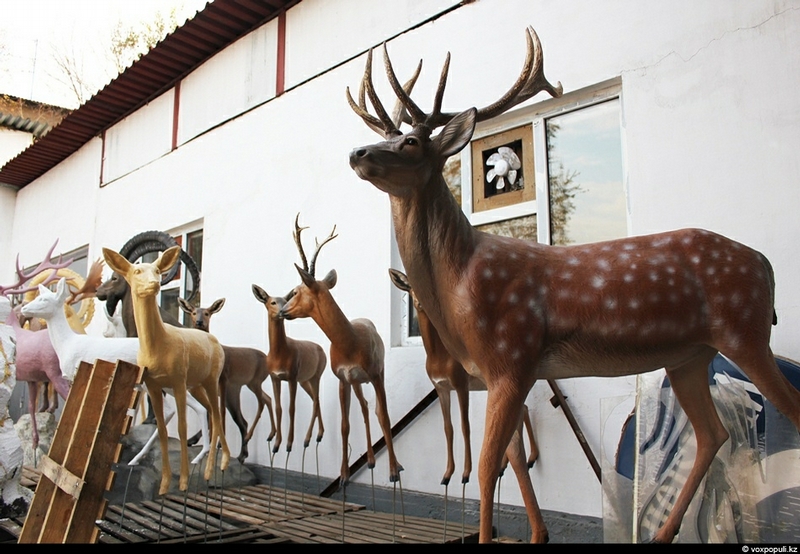
The studio features a lot of sculptures which can be found in parks. Besides, any person can order one for his/her own private backyard.
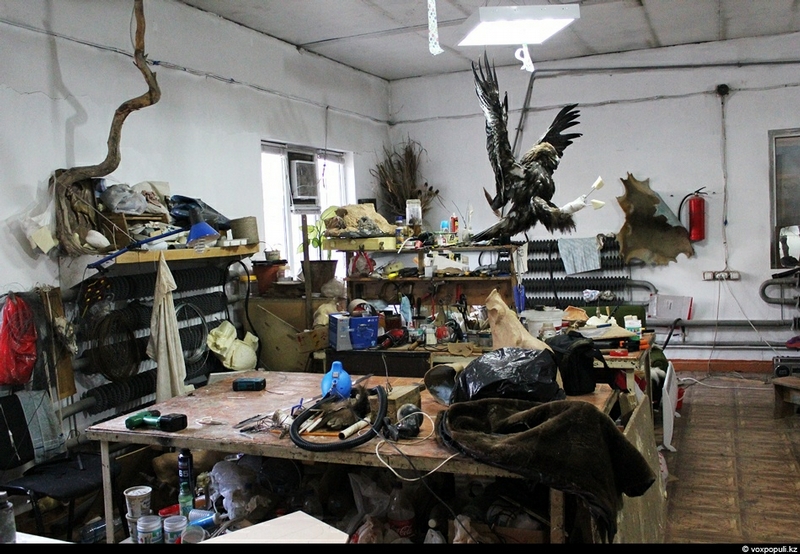
In this department, they turn heartless sculptures into animal copies.
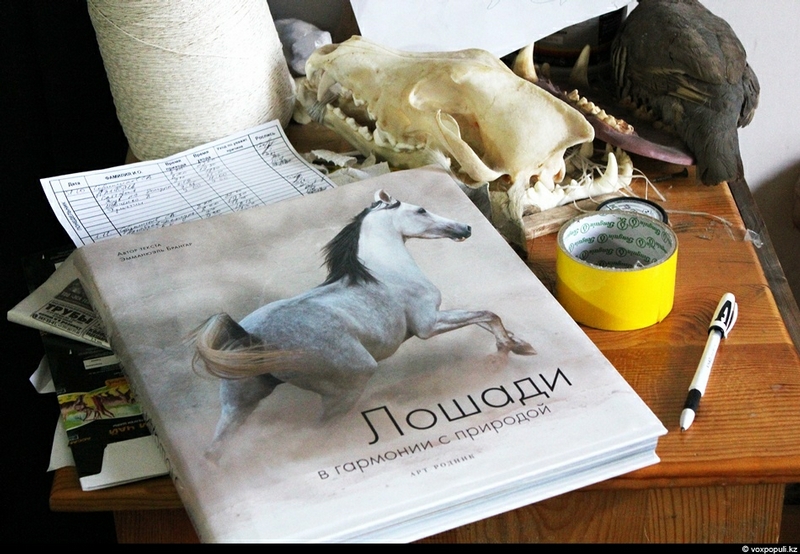
Taxidermists have to know each detail on the animal’s body to make the stuffed animal look real.
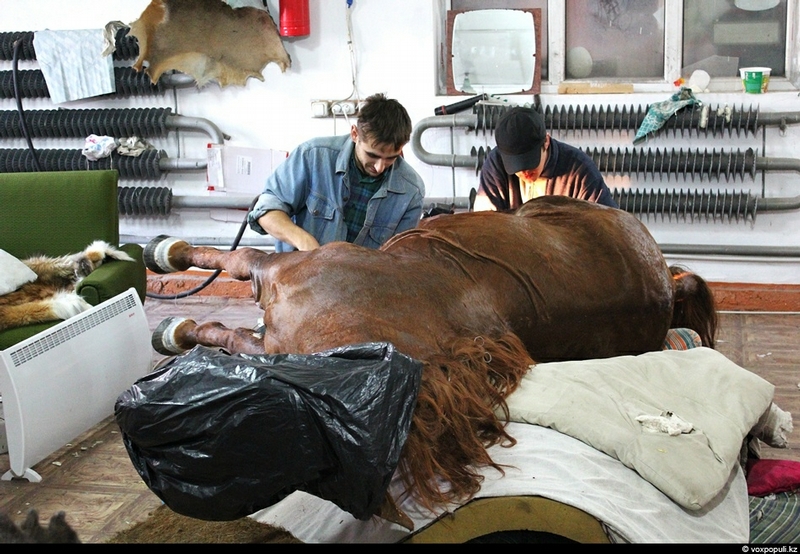
Skins are brought to the studio from slaughterhouses and markets.
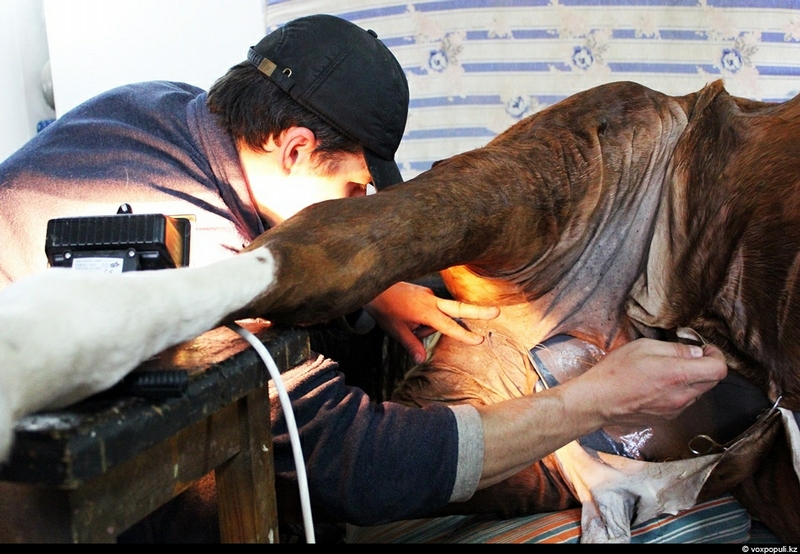
Note that the skin doesn’t fit tightly all over the sculpture. In some places it’s loose-fitting and forms wrinkles.
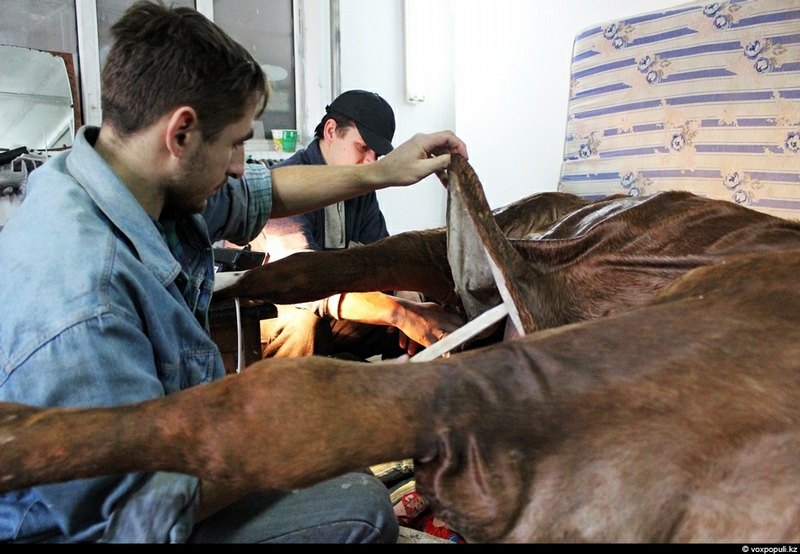
Each skin undergoes special treatment (they wash it, remove fat and salt and do other procedures).
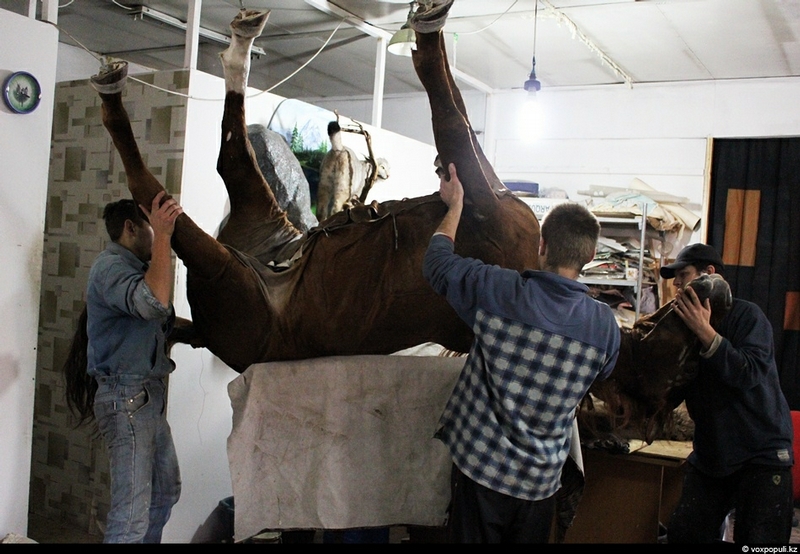
They’re going to sew up the ‘stomach’ of the stuffed horse.
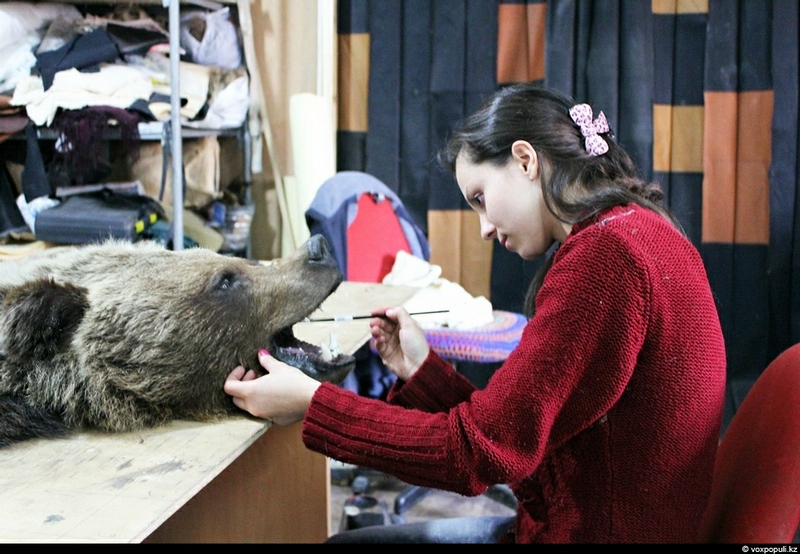
Restoring the bear’s head.
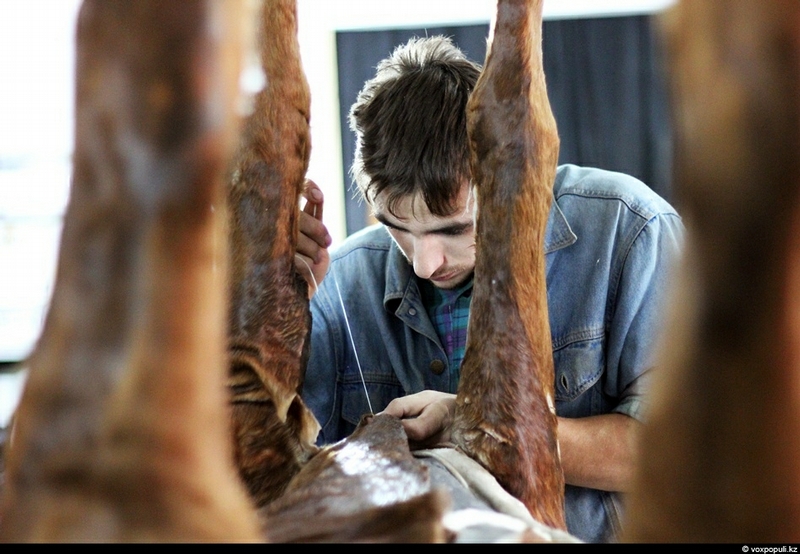
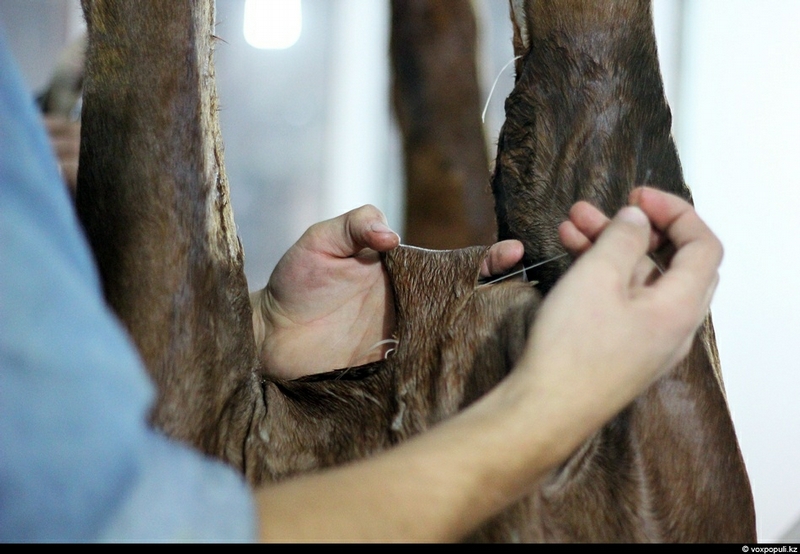
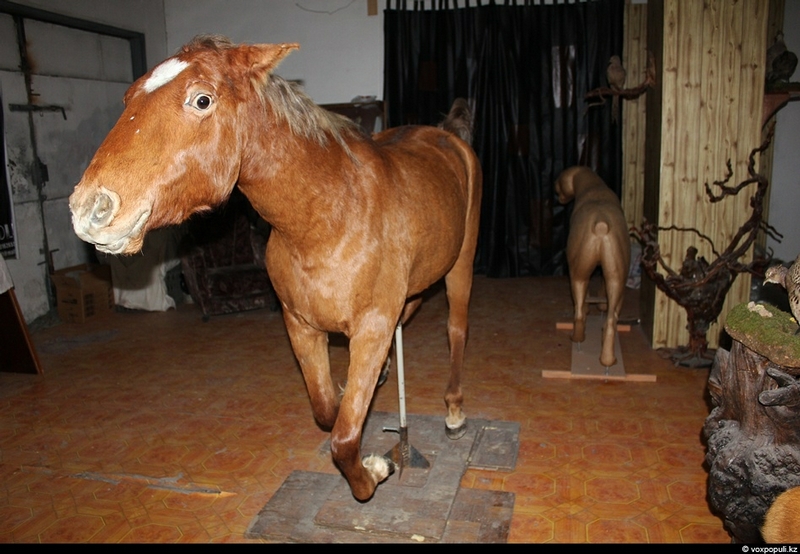
This horse is also made for a museum.
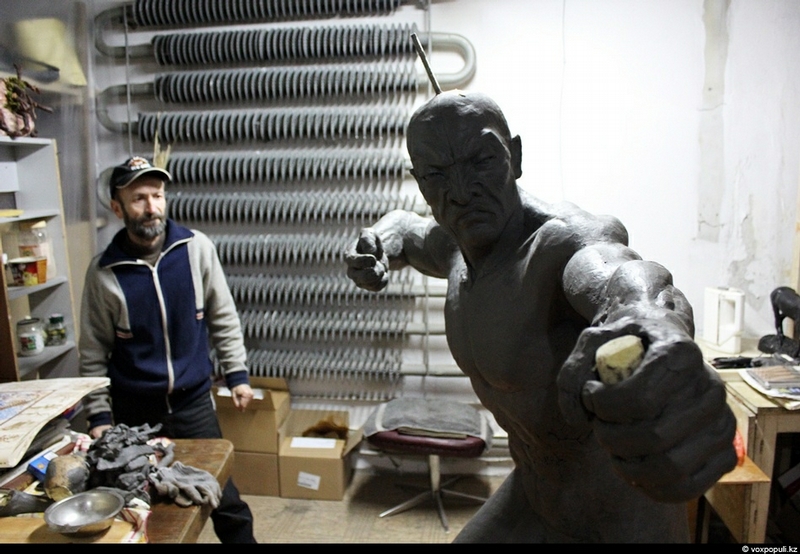
But unlike the one for Karaganda, it is going to have a horseman.
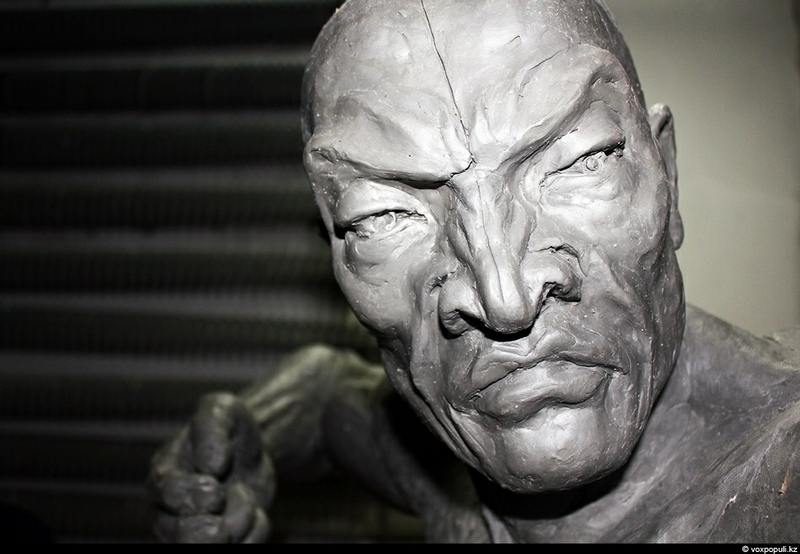
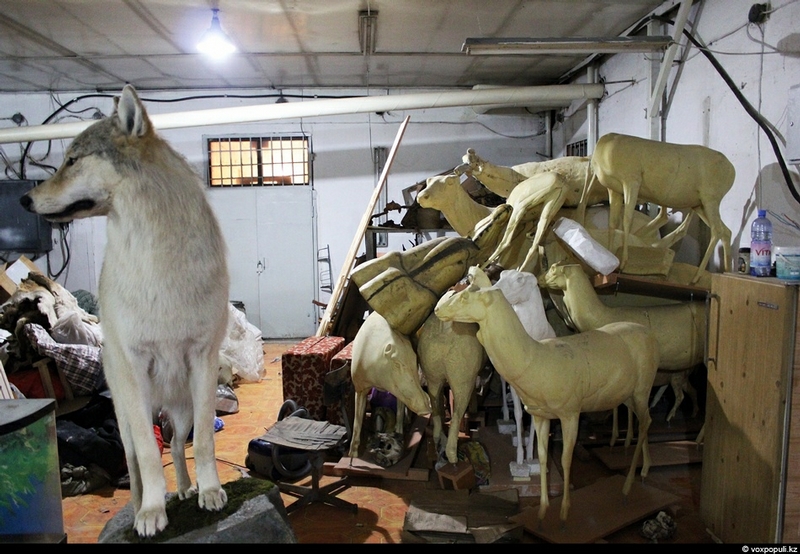
Some models are purchased in Germany, America, Moscow and Saint Petersburg.
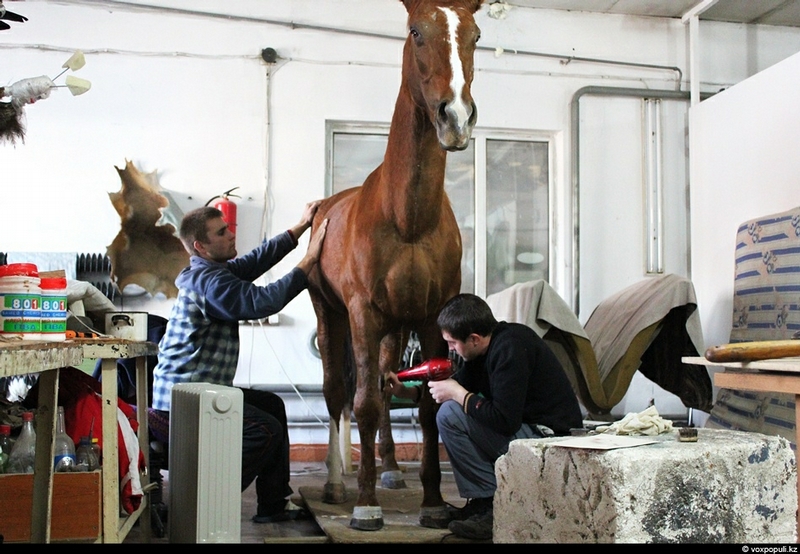

‘Cosmetic repairs’.
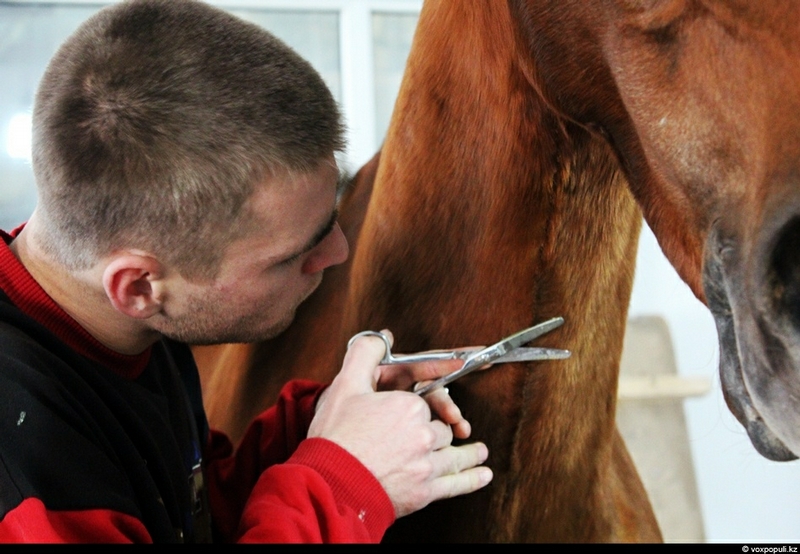
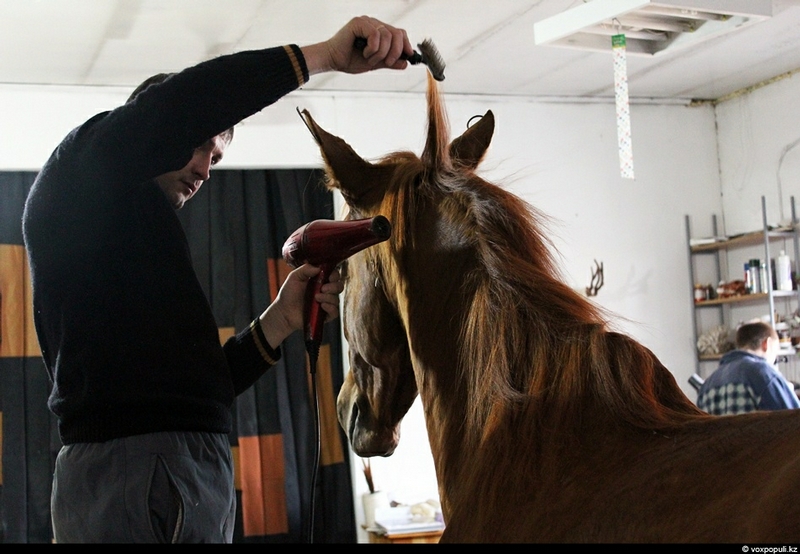
They comb the horse’s mane and arrange it with a hair drier.

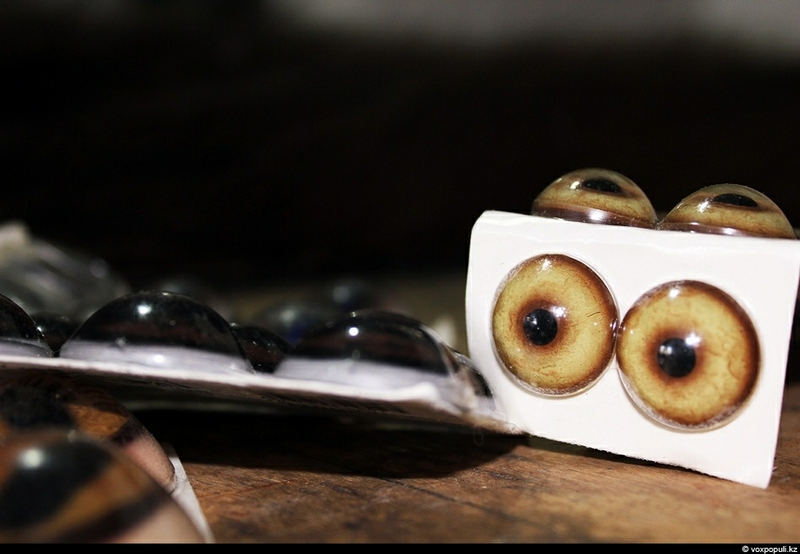
Artificial eyes can be found in pet shops and factories producing ocular prostheses.
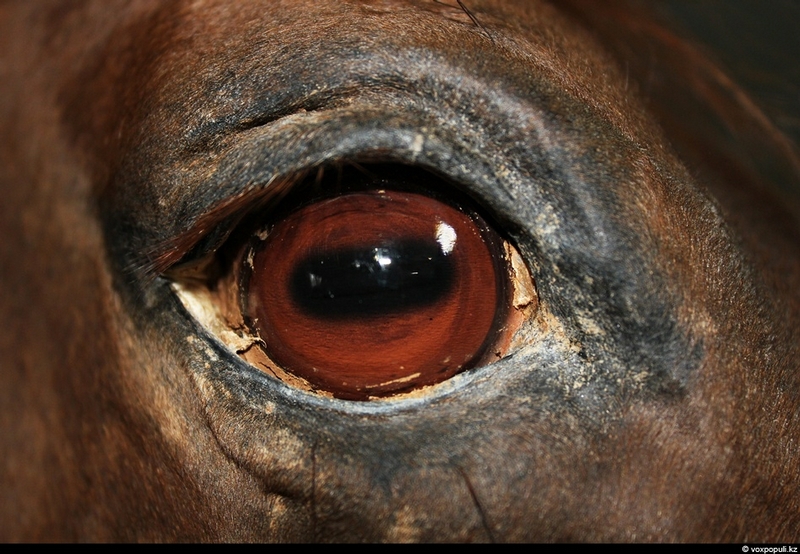
Artificial eyes should make the stuffed animal look real. That’s why it is one of the most difficult parts of the work.
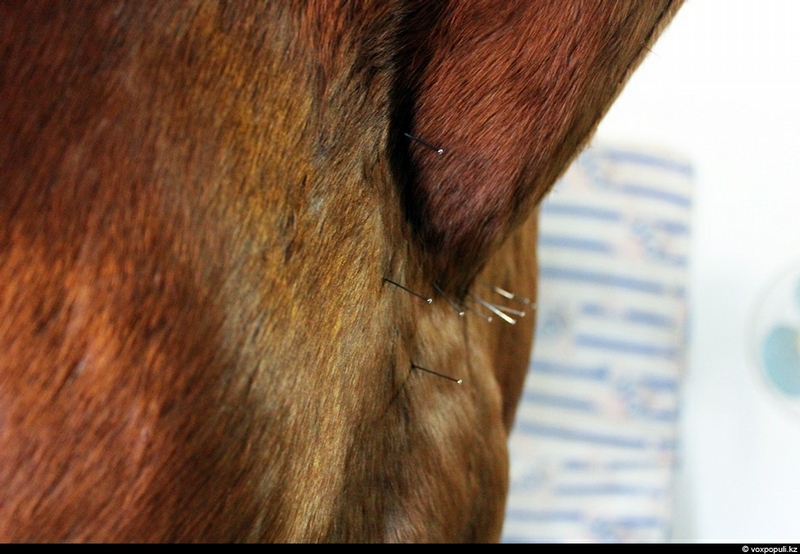
They pin the skin to the sculprure to make muscles visible.


Each skin has defects and the taxidermist has to rectify them with paint.

Worn spots are eliminated with an airbrush
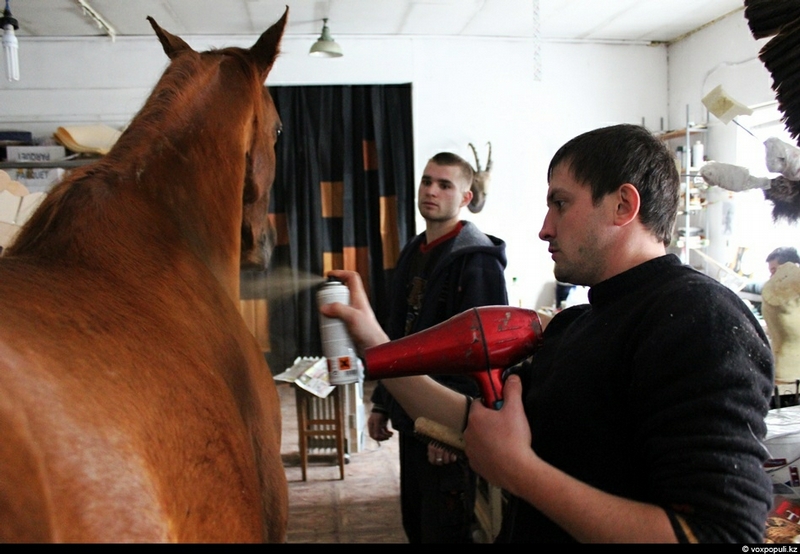
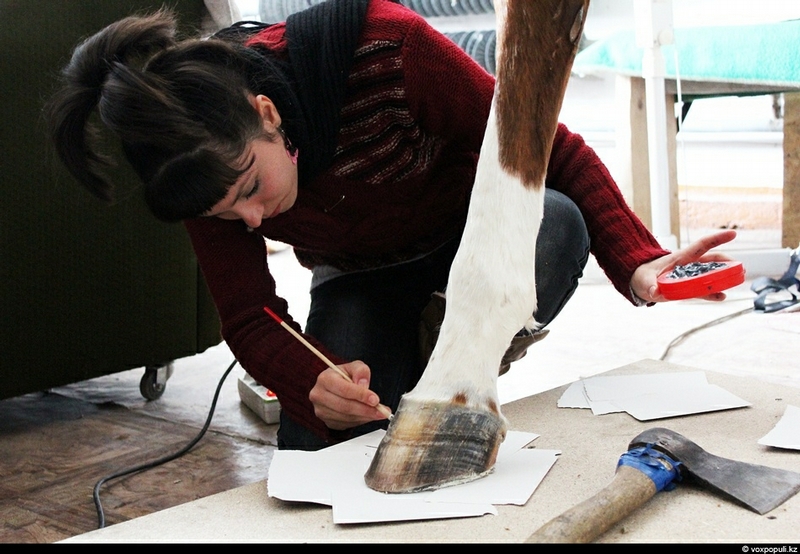
Varnishing the hoofs.
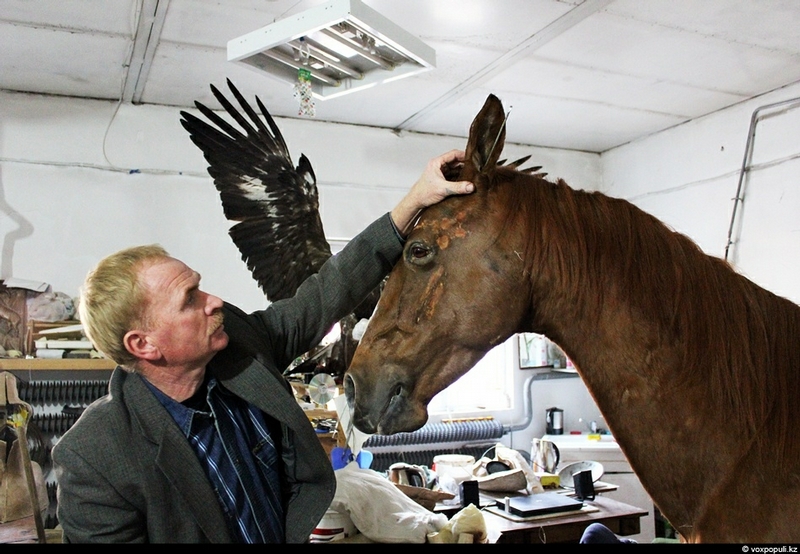
It is difficult to work with a horse’s skin because you can’t hide the defects it has with long hair like the one a bear or wolf have.
This horse costs 1 million tenges.
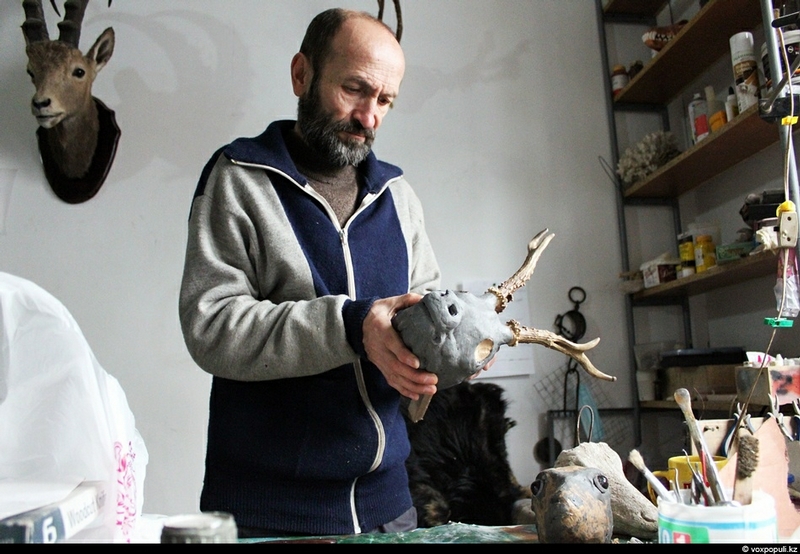
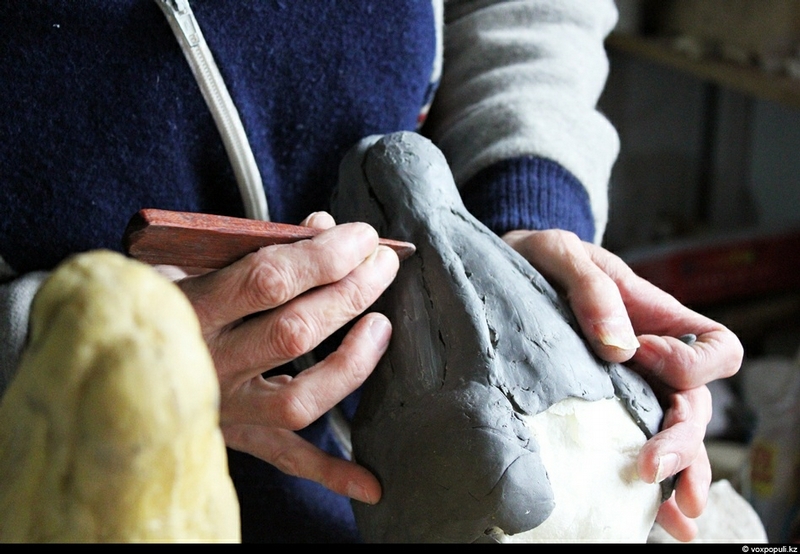
Each taxidermist is busy at the studio because they make several stuffed animals at the same time.
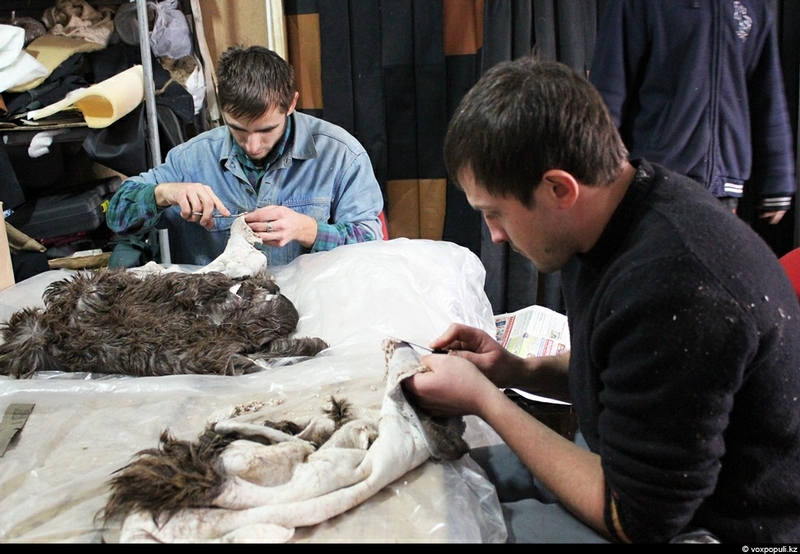
A wild mountain goat’s skin.
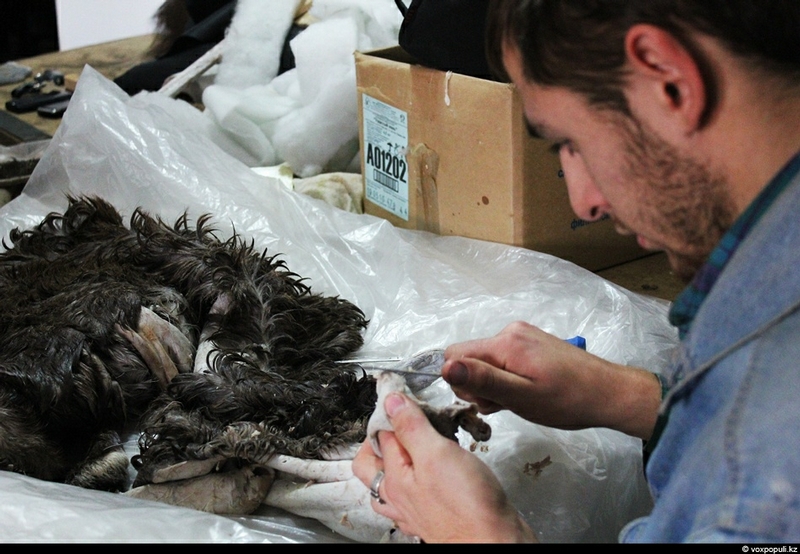
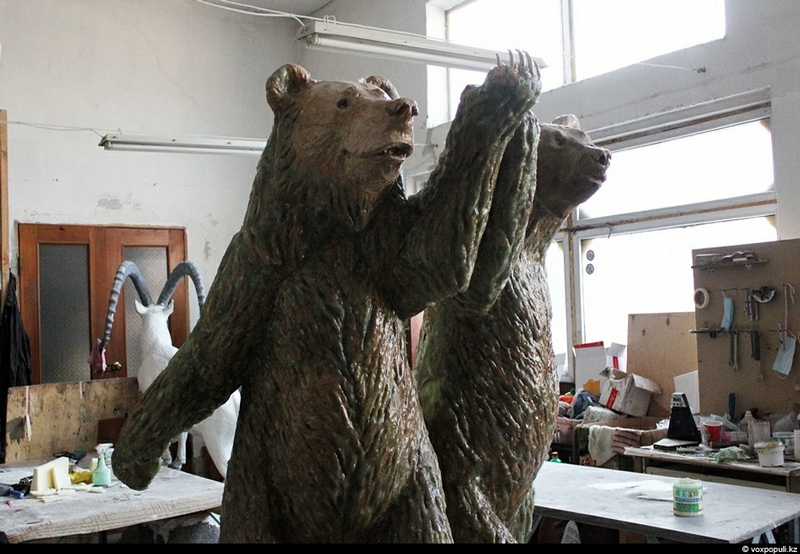
Meanwhile, the bears are covered with polyester resin.
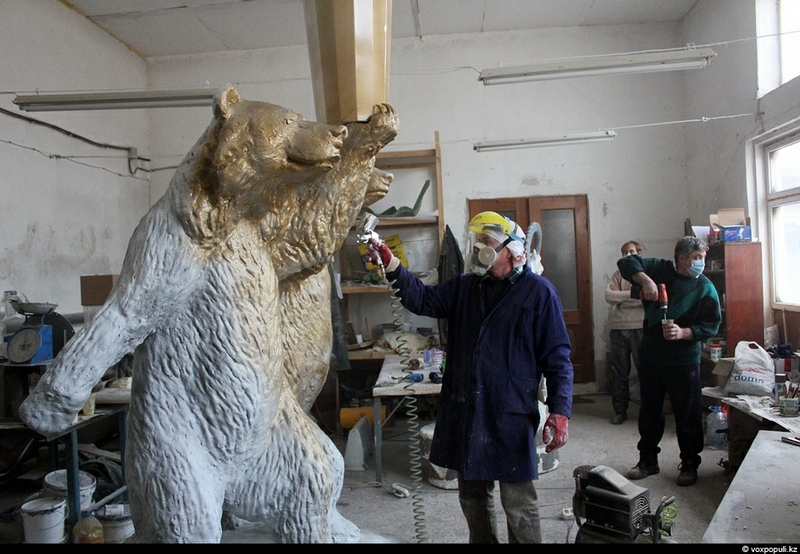
And then, with bronze.
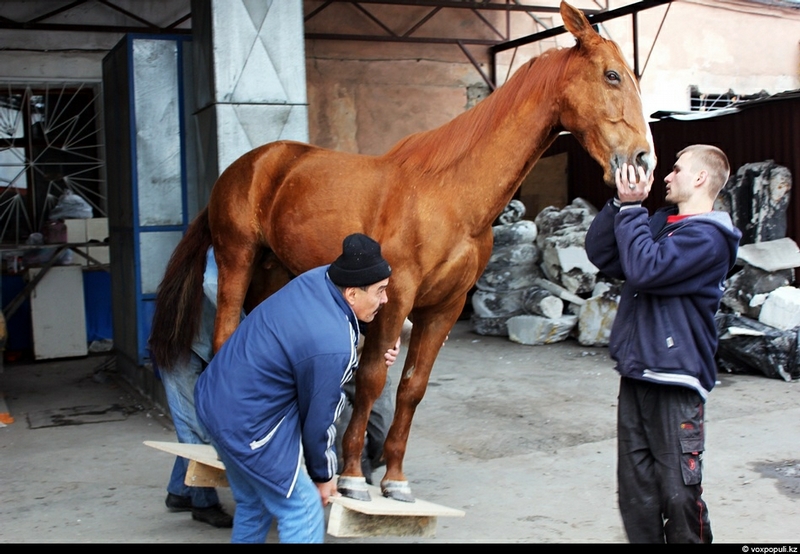

Soon it’s going to be exposed in Karaganda wearing a saddle and harness.

Bears are exposed near a restaurant in Almaty.

Taxidermists don’t kill animals, as many people think. They give them a second life.
Copyright to MydeaMedia @ 2012

No comments:
Post a Comment